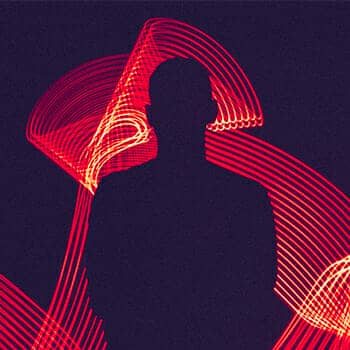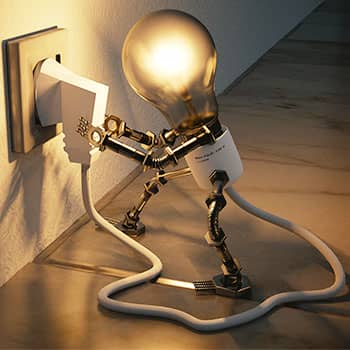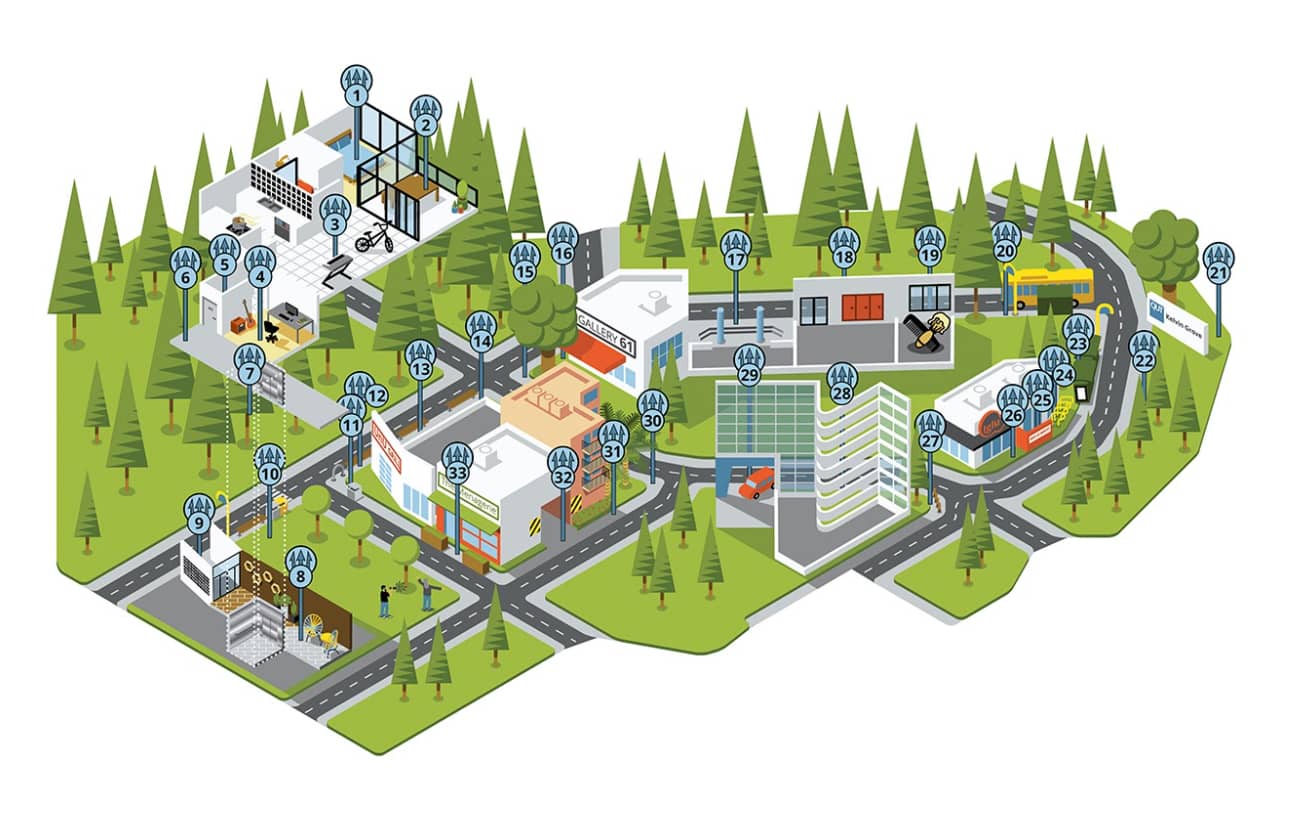Podcast: Download
Subscribe: Apple Podcasts | RSS
 Mental imagery is a confusing topic.
Mental imagery is a confusing topic.
There’s tons of data.
Oodles of opinions.
Zero consensus.
That’s fine. That’s what science is all about.
But when it comes to memory, both in terms of psychology and using your memory better, I’ve got good news.
There are some stunningly clear definitions.
And for those of us who use memory techniques, I’m going to uncover powerful and interesting angles that lead to better results. Quickly.
If you’re not into using mnemonics, you’ll discover how mental imagery compares with perception too.
Ready?
Let’s dive in!
What Is Mental Imagery?
Unfortunately, there is no agreement on what mental imagery is or how it should be defined.
For example, philosophers of mental imagery dismiss – albeit not without reflective thinking – some of the most interesting findings in books like The Case for Mental Imagery.
The controversy and debate is certainly interesting, but for our purposes, let’s define mental imagery in a variety of ways. We’ll do so based on a single core principle:
Mental imagery is an experience in the mind that resembles how you could potentially interact with real people, places and objects.
This definition assumes that everything imaginary is based on an extension of something that is real.
But before we get into controversy over that, let’s look at some of the angles that help substantiate this basic definition.
Iconic Memory
Iconic memory typically involves brief experiences of mental imagery. These images reside in short term memory and are typically disregarded.
Daydreaming, for example, is often completely forgotten seconds after the fantastic images enter the mind.
Or, your iconic memories may be striking enough to enter long term memory. They could even be as strong as flashbulb memories.
Some studies show that this kind of mental imagery helps with human movement through space as well.
There’s also potentially a relationship between these rapid mental images and verbal memory.
For example, the experience of mental images may not have any words involved. But experiencing a quick mental image prompts you to speak. It doesn’t provide the exact words per se, but is a deep generator of the message.
In sum: If you do or say something, this theory suggests that the image comes first, then the action.
Imagination
Did you ever play with an imaginary friend? Or even develop an entire paracosm of them?
If so, you’ve experienced a subjective mental state that no one can observe but you.
Your imaginary friend may appear and fade, sometimes feel concrete in your mind, other times abstract.
Either way, this kind of mental imagery leads to more than just fun. It can help you be creative, use memory techniques better and even solve problems.
The question here that no one has an answer to is this: can you invent anything in your mind? Or does mental imagery always need a starting point or some kind of association?
Personally, I think everything is connected in a wave of relations. Anything that seems original is always born out of something that already existed. As the literary theorist Northrop Frye put it, “all poems come from other poems.”
Mnemonic Images
Using associations in pairs is well-known in the psychology of learning to be essential, particularly in areas like reading. Phonological awareness, for example, has been shown in studies to help with many aspects of literacy.
As my colleague in memory, Richard Ruben, has pointed out, people without phonological awareness struggle to use mnemonics. If they haven’t been taught to sound out the alphabet, they struggle later to make paired associations, for example. In fact, every letter of the alphabet is a paired association of at least a shape and a sound.
Overall, mnemonic images are essential to learning faster and remembering more. Mental imagery extensively with the Memory Palace technique as people imaginatively tie associations to loci.
Medical students, for example, rapidly form memories by using mental imagery. In fact, medical mnemonics is a huge industry, covering everything from anatomy, to pharmaceutical terms and information related to nursing.
Without paired associations made possible by mental imagery, people would have to rely solely on rote learning.
Demand Characteristics
Here’s a neat one:
In science, it’s important not to give away too much information. If people predict or intuit what’s going on in a study involving participants, they can skew the results.
This is because participating in a study creates pictures in your mind – think of the icon part of iconic memory.
And it’s not just that you think about what the study might be about. As we’ve seen, iconic memory dictates how we behave physically.
How do scientists deal with demand characteristics?
Their tactics include everything from double-blind studies to outright deception.
Dual-Coding Theory
This theory suggests that there’s a division between what you imagine visually and your verbal intelligence.
Essentially, the dual coding effect started with Allan Paivio who published over two hundred articles on this topic.
I find the theory problematic myself because his distinction between analogue codes and symbolic codes seems problematic. The first deals with anything in your visual perception. Symbolic codes deals strictly with words.
But aren’t words perceived too? And in a variety of ways? I can imagine the alphabet visually without tying it to a sound and imagine a sound wave produced by a technology I might not even know by name.
Alternative theories include propositional representation, parallel distributed processing, cognitive mapping and a number of constructivist theories that you might want to look at.
How Does Mental Imagery Compare with Perception?
Mental imagery and perception are two crucial processes that shape our understanding of the world. While both involve the representation of sensory information, they exhibit unique characteristics and play distinct roles in our cognitive experiences.
Mental imagery, often described as the ability to create sensory experiences in the absence of external stimuli, allows us to mentally represent and manipulate sensory information. Of course, there are people without a mind’s eye (aphantasia) who are still able to do exactly this, creating a puzzle about what exactly imagery is in the mind and imagination.
Similarly, perception involves the interpretation of sensory input from the external environment to form our conscious experience. We need this in order to enjoy the benefits of sensory learning. Yet, there are people who cannot see, hear or feel with their limbs. They still manage to navigate the world and learn all kinds of things.
At the end of the day, I’m convinced that mental imagery and perception are not separate, but joined at the hip in some very special ways.
Unlimited Imagination?
Perception, with its emphases on access to actual learning material and your physical surroundings, is obviously bound by sensory input and material constraint. Our perception is literally limited by the information available from our senses and the physical properties of the objects and events in the external world.
Some people will argue that mental imagery is more flexible and unconstrained by the same physical limitations. They suggest that we can create vivid mental images that defy the laws of physics or imagine events that surpass the boundaries of our sensory experiences.
Although this may be true, the strength of our ability to do so comes down to reference and practice. By reference, I mean how well you read and how much. In order to imagine flexibly, you need deliberate practice with worthwhile books.
We will always be limited by both perception and mental imagery, but we can expand our limits by constantly learning.
How Memory Training Improves Your Mental Imagery
In order to enjoy much more interesting mental imagery that truly will expand your current limitations, you’ll want to start using memory techniques.
I suggest exploring:
Although that might seem like a lot to explore, you can rapidly learn each approach by starting with the Memory Palace technique.
Get my free course in order to learn how.
You’ll get four clear, crisp and direct video lessons along with some worksheets that will help you understand mental imagery experientially.
The learning cycle I’ll take you on in this course helps you chunk even the toughest information down into small bits of imagination that you won’t soon forget.
So what do you say? Are you feeling clearer about this important term now? Let me sum things up like this:
Mental imagery is not in the same category as seeing an image on the wall. It’s what you experience when you imagine what a picture looks like hanging either in your home or in an art gallery.
But people use the term in different ways, and I’ve covered the majority of them today.
Personally, I think of mental imagery as a kind of “inner language.” It’s non-linguistic at its core, but still semantic because of how iconic memory uses it to produce words.
One way or another, mental imagery appears to be a process that leads to either representation or action.
And if others happen to see the actions you take and remember them, then that too is another special kind of mental image. The brain is always monitoring and updating its knowledge of the world and we clearly need mental representation to do it.
Enjoy this intensely special aspect of your mind!
Related Posts
- Aphantasia: Develop Your Memory Even If You Cannot See Mental Imagery
Ever struggled to create mental images? You might have aphantasia. Using image streaming, people with…
- Memory Athlete Braden Adams On The Benefits Of Memory Competition
Braden Adams is one of the most impressive memory athletes of recent times. Learn to…
- A Few Simple Ideas That Will Help You Trust Your Memory Skills
Learn about how to develop trust in your ability to memorize ... even if you…









